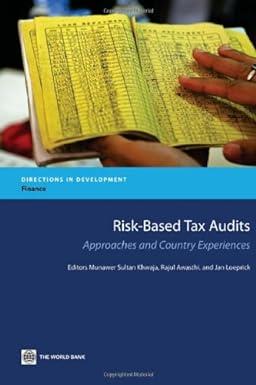Please try to respond ASAP. I need the answer URGENTLY WITHIN 30-40 MINS IF POSSIBLE.

Q.3. Answer the following: [5+3+3] a) Consider the following training data set (with three attributes, such as Past trend, Open Interest, Trading Volume and class/target variable is "return") for a binary class problem. The attributes are nominal with two possible values. We intend to create a decision tree model using Information Gain. Which attribute would the decision tree induction algorithm choose for the root node? Open Interest Return Past Trend Positive Negative Trading Volume High Low Up High Low Down Positive Low Up High High Positive Up High Low High Down Negative Positive Low Low Down High Down High High Low Down Negative Negative Positive Positive Low Low Down High High Up b) Suppose a training set consists of 100 positive examples and 100 negative examples for each of the rules R1 and R2. Considering Rl covers 30 positive examples and 90 negative examples; R2 covers 60 positive examples and 60 negative examples, Identify which rule is better, using FOIL gain. c) Consider the confusion matrices for two models M1 and M2 are given below. Evaluate the performance of models using F1-score, and Identify which one is better. M2: M1: Predicted Positive Negative Class Actuall! Class Predicted positive Negative Class Actual Class Positive 1600 400 2000 Negative 800 1200 2000 1400 1600 4000 Positive 1800 200 2000 1600 2000 Negative 400 2200 1800 4000 Q.3. Answer the following: [5+3+3] a) Consider the following training data set (with three attributes, such as Past trend, Open Interest, Trading Volume and class/target variable is "return") for a binary class problem. The attributes are nominal with two possible values. We intend to create a decision tree model using Information Gain. Which attribute would the decision tree induction algorithm choose for the root node? Open Interest Return Past Trend Positive Negative Trading Volume High Low Up High Low Down Positive Low Up High High Positive Up High Low High Down Negative Positive Low Low Down High Down High High Low Down Negative Negative Positive Positive Low Low Down High High Up b) Suppose a training set consists of 100 positive examples and 100 negative examples for each of the rules R1 and R2. Considering Rl covers 30 positive examples and 90 negative examples; R2 covers 60 positive examples and 60 negative examples, Identify which rule is better, using FOIL gain. c) Consider the confusion matrices for two models M1 and M2 are given below. Evaluate the performance of models using F1-score, and Identify which one is better. M2: M1: Predicted Positive Negative Class Actuall! Class Predicted positive Negative Class Actual Class Positive 1600 400 2000 Negative 800 1200 2000 1400 1600 4000 Positive 1800 200 2000 1600 2000 Negative 400 2200 1800 4000







